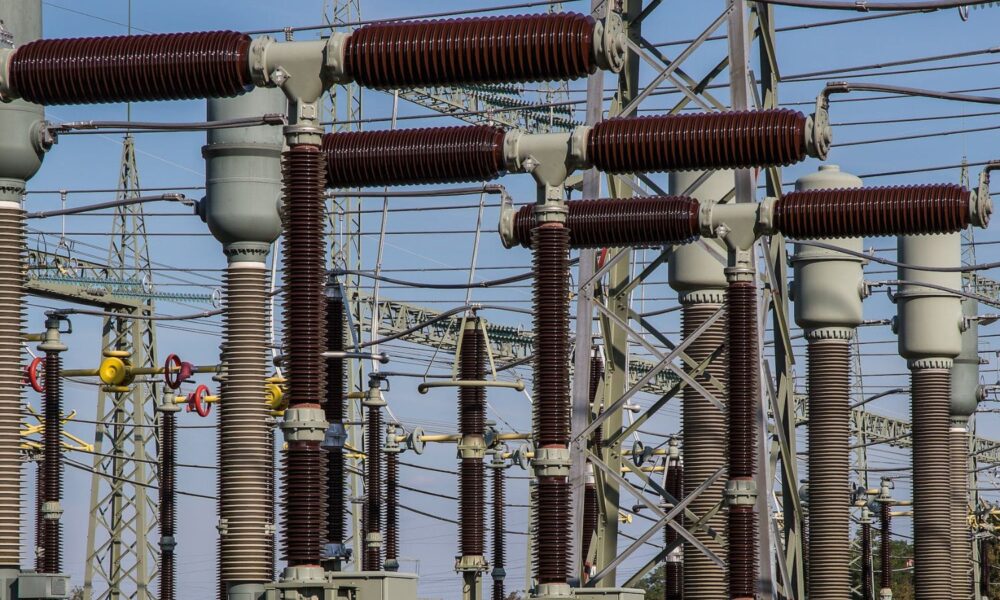A new North American Electricity Reliability Corporation (NERC) and Federal Energy Regulatory Commission (FERC) review of power outages and gas industry failures reveals the potential for prolonged and deadly power outages. But their simple, yet potentially life-saving recommendations are voluntary, and the responsible parties go unnamed.
NERC—as well as the regional organizations across the country tasked with ensuring the electric grid remains reliable and secure—identify gas supply failures as not just a cause of deadly 2021 power outages in Texas, but also as an ongoing threat to the restarting the electric system following a blackout during an extreme cold weather event, which is called a “blackstart.”
Their findings related to blackstarts have not been widely reported because NERC and FERC released their report in late December, obscured the identities of the responsible parties, and made a very serious problem seem dull and esoteric.
Their new report on grid reliability vulnerabilities due to electric power plants’ overreliance on uncertain and unregulated gas supplies comes two years after FERC and NERC’s extensive analysis of gas failures causing power plant shutdowns. During the Texas energy market’s chaos in 2021, news organizations and industry players gave only brief attention to the worst-case scenario: an uncontrolled Texas electric grid blackout that could have lasted weeks or longer to get the lights back on. Gas-burning plants continued to go offline, bringing the grid precariously close—within 4 minutes and 37 seconds—of that happening, according to the CEO of the Electric Reliability Council of Texas (ERCOT), the grid operator for Texas.
The FERC-NERC report, which points out that the danger of trying to restart the electric system from a blackout using gas-burning power plants has been underestimated, also describes some astounding examples of out-of-date, ill-prepared practices for running the electricity system with gas.
What Happened in Texas?
In February 2021, extreme cold temperatures wreaked havoc with the electric supply controlled by ERCOT, the Southwest Power Pool (SPP) and the Midcontinent Independent System Operator (MISO) South, which manage electric grids covering large swaths of the country. The FERC-NERC review of the 2021 outages found 81 percent of freeze-related plant outages occurred at temperatures warmer than the plants were designed to meet and 87 percent of outages due to fuel issues were tied to natural gas. More than 240 people in Texas and Mexico died from exposure to the cold during these extensive energy system failures.
It Happened Before
The FERC-NERC review of electric system outages in cold weather follows several others that also surprised grid operators as well as the general public. Similar extreme cold weather caused grid emergencies in 2011, 2014, 2018, and again in 2022. These recurring electric supply crises revealed the vulnerability of conventional power plants and the gas supply to cold weather.
Before the US electric system became so reliant on gas, power outages happened more often during hot weather and nearly always were caused by wire failure, not by fuel and power plant failures. The repeated failures in cold weather reflect outmoded thinking about both gas and extreme cold weather. The FERC-NERC report cites warnings in their unheeded 2018 analysis that “the reliance on a single fuel type without firm fuel arrangements could impact the availability of blackstart and next-start resources during a scenario when natural gas is curtailed.”
What’s New?
This report is different. FERC and NERC now assert that the same problems that caused the lights to go out also will delay and threaten getting the power, communications and lights back on in the event that a blackstart is needed. This report calls out the same cold weather ill-preparation and disturbingly non-existent system restoration plans that should incorporate the needs of both the electric plants and the gas supply those plants require. And it points out that, unlike weather-related outages caused by downed power lines affecting only parts of a region, systemwide blackouts need detailed, coordinated blackstart system restoration plans to restart power plants that go offline when the power goes out.
NERC, FERC and US regional reliability entities have determined that the power plants responsible for restarting the system, designated as “blackstart units,” often failed in 2021 because of frozen equipment and gas supply failures. The new FERC-NERC report quietly asserts that when the lights are out and everyone’s priority is on restoring the electric system, relying on gas-fired plants might not work. As disturbing as that is, FERC and NERC maintain the fixes are only voluntary despite the potentially deadly consequences of leaving this problem unaddressed.
Here’s the FERC-NERC language regarding the need for crucial changes: “The report imposes no obligations…. The joint study team strongly urges that the report’s recommendations and observed practices be implemented by the entities necessary for blackstart system restoration.” “No obligations” will likely mean more people without power will die in the cold.
Could It Be Any Worse?
This report is astonishing. It doesn’t bother to mention that hundreds of people lost their lives in the 2021 power outage until Appendix 3. It does not even once cite the name of the entity responsible—ERCOT—that made blackstart reliability procurements that didn’t actually assure reliability. (The initial FERC-NERC report about the 2021 outage released in November 2021 did not shy away from naming responsible parties. It cited ERCOT 700 times. It also cited MISO 499 times and SPP 436 times.) And their new report skirts citing any entity by name that should follow its key recommendations. Their initial 2021 report named 28 gas pipeline companies and four grid operators, and described problems at more than 1,000 power plants.
What is most appalling is the tone FERC and NERC adopted when describing the absence of preventive measures, such as remote monitoring of key equipment temperature. That technology has been available to homeowners for more than a half century. In the 1970s, my dad had a gadget attached to the phone in our house that would let our family know if the heat went off when no one was home. The FERC-NERC report recommends this technology as if it were new. “Remote temperature monitoring allows operators to remotely monitor and continuously receive alarms through Supervisory Control and Data Acquisition (SCADA) if the temperature reaches certain thresholds,” the report states. “These participants also reported that they find it advantageous to have access to this advanced monitoring remotely because of the ease it provides in identifying and addressing issues.”
When we talk about a “modern” grid, we need to understand how vital electric grid equipment has suffered from consistent underinvestment, lack of accountability, and neglect—all shrouded as necessary under competitive market pressure. By contrast, the solar panels on my roof have modern electronic components (inverters) that incorporate monitoring and communications that the FERC-NERC report is suggesting that power plant owners adopt. Again, FERC and NERC are merely recommending, not requiring, these precautions.

Solar inverters offer homeowners remote access to data including temperature. (Source: Enphase Enlighten Manager)
FERC and NERC’s new set of recommendations for addressing gas vulnerabilities that threaten recovery from electric power outages follows their initial 2021 report that included 28 formal recommendations. But like their previous report, this report has no teeth. Once again, the two agencies only call for power plant and grid operators to make voluntary changes. Their recommendations from 2021 were largely ignored, and their new recommendations likely will suffer the same fate.
State and federal policymakers have two choices to address this situation. Congress can step in and require reliability standards for the gas industry for the first time ever. Unfortunately, that is unlikely. The alternative is for states to heed the FERC-NERC suggestion that renewable energy, such as wind and solar power; battery storage; and expanded interregional transmission are viable means to replace gas-dependent generation for restarting the electric grid after a blackout. These are the very solutions that the Union of Concerned Scientists and other clean energy advocates have been talking about for years, but the gas industry has fought them every chance they get. It’s time policymakers place the priorities of people over profits of an industry that has jeopardized so much.

